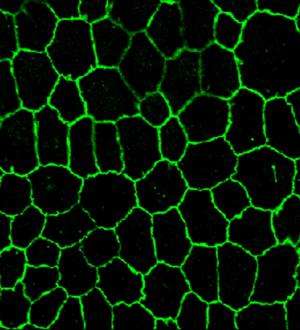Scientists make major breakthrough in Age-Related Macular Degeneration therapy

Scientists at Trinity College Dublin have made a major breakthrough with important implications for sufferers of the eye disease Age-Related Macular Degeneration (AMD), which can cause central blindness in sufferers.
The scientists found that a component of the immune system, 'IL-18', acts as a guardian of eyesight by suppressing the production of damaging blood vessels behind the retina at the back of the eye. In addition, in pre-clinical models, it was shown that 'IL-18' can be administered in a non-invasive way, which could represent a major improvement on the current therapeutic options that are open to patients.
"We were initially concerned that IL-18 might cause damage to the sensitive cells of the retina, because it is typically linked to inflammation. But surprisingly we found that low doses had no adverse effects on the retina and yet still suppressed abnormal blood vessel growth," said Assistant Professor in Immunology at Trinity, Sarah Doyle, who is the first author on the paper.
AMD is one of the most common forms of blindness in the aging population. The disease involves a loss of central vision, such that people suffering at advanced stages are unable to read, watch TV, drive, or use computers.
There are two forms of AMD: 'dry' and 'wet'. Dry AMD accounts for the majority of cases, but wet AMD causes over 90% of blindness associated with the disease. In wet AMD, blood vessels underneath the retina begin to grow abnormally, which causes almost immediate central blindness. Because central vision accounts for almost all of our daytime visual acuity, wet AMD sufferers experience severe and profound day-to-day challenges.
Treatment options for wet AMD are currently limited to the end stages of the disease. Regular injections of antibodies must be made directly into the eye to mop up a problematic molecule termed 'VEGF'. However, the Trinity scientists found that IL-18 directly inhibits VEGF production, and that it can work as effectively as the current treatment when administered via a non-invasive intravenous injection in pre-clinical settings.
"Our findings have highlighted the power of industry-academic collaborations, the results of which should lead to clinical deployment of IL-18 as a treatment for AMD in the short term," added Research Assistant Professor in Genetics at Trinity, Matthew Campbell.
The research, published online this week in the high-profile international journal, Science Translational Medicine, was supported by Enterprise Ireland (EI), Science Foundation Ireland (SFI), the US-based charity Brightfocus Foundation, and major pharmaceutical company GlaxoSmithKline (GSK).
Vice President of Ophthalmology at GSK, Dr Pete Adamson, said: "A greater understanding of the molecular complexity of diseases such as AMD is critical to the development of new medicines."
More information: "IL-18 Attenuates Experimental Choroidal Nascularization as a Potential Therapy for Wet Age-Related Macular Degeneration," by S.L. Doyle et al. Science Translational Medicine, 2014.
















